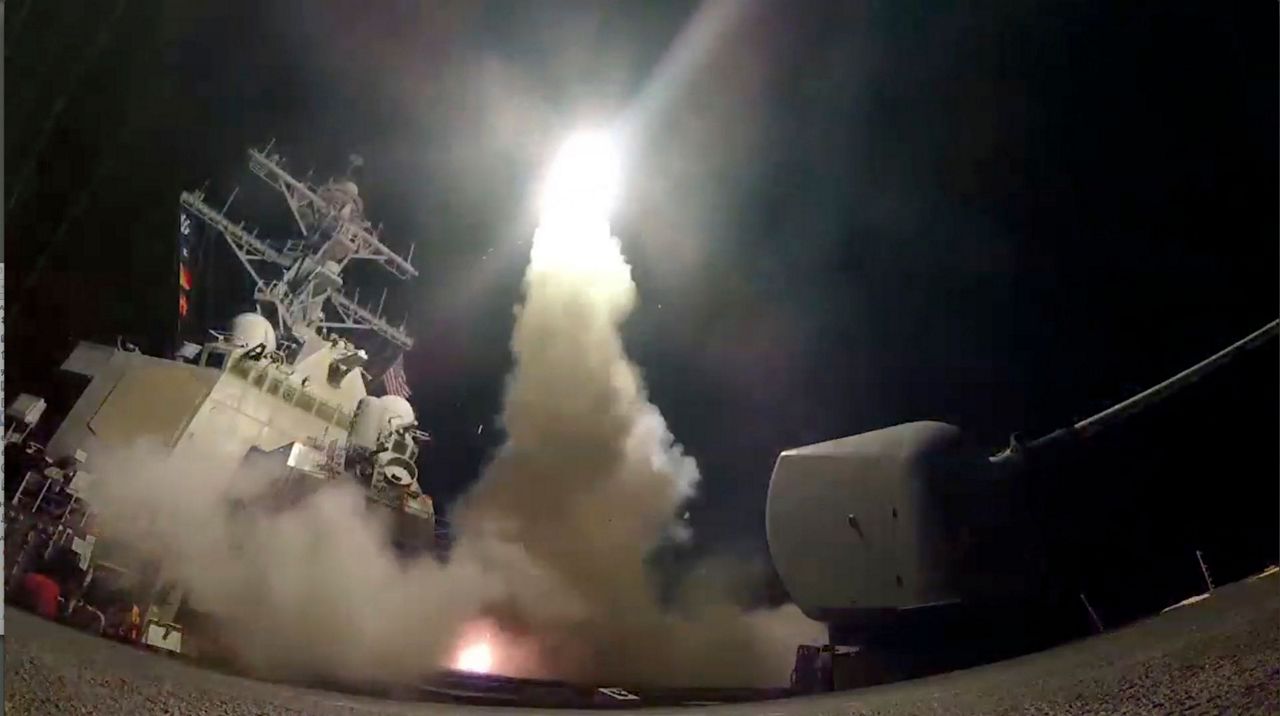TOKYO (AP) — The lower house of Parliament approved Tuesday a budget for the coming fiscal year that includes a record 6.8 trillion yen ($50 billion) in defense spending, part of Japan's effort to fortify its military as China’s influence in the region grows.
The 2023 defense budget, up 20% from a year earlier, includes 211.3 billion yen ($1.55 billion) for deployment of U.S.-made long-range Tomahawk cruise missiles that can be launched from warships and can hit targets up to 1,600 kilometers (1,000 miles) away.
The planned purchase of the Tomahawks has drawn criticism over the cost, with opposition lawmakers blasting Prime Minister Fumio Kishida for prioritizing arms spending over other issues such as Japan's shrinking population.
“The improvement of childcare has been neglected for more than 10 years,” Chinami Nishimura, a lawmaker with the opposition Constitutional Democratic Party of Japan, told a lower house budget committee meeting Tuesday. “Why did the budget for spending so much money on Tomahawks get approved so quickly?”
“I don’t think it’s about choosing between one or the other," Kishida responded. "Both are important for the lives and livelihood of the people.”
Japan is to pay the United States another 110 billion yen ($830 million) in the coming fiscal year, which begins in April, for equipment and software needed to launch the Tomahawks plus fees for technology transfers and training.
Kishida told a parliamentary session Monday that Japan will purchase 400 units of Tomahawks.
Passage of the 114 trillion yen ($836 billion) budget by the lower house of parliament, the more powerful of its two chambers, ensures it will be enacted by the end of March regardless of any decision by the upper house.
The hefty defense budget is the first installment of a five-year, 43-trillion-yen ($315-billion) military spending plan as part of Japan's new National Security Strategy, which was announced in December.
The new strategy includes developing a “counterstrike capability” to preempt enemy attacks, a controversial change given Japan's commitment to retain only defensive capabilities after its defeat in World War II. Military spending is due to nearly double within the next five years as Japan builds up its defenses in response to potential threats from China, North Korea and Russia.
The new spending target conforms to NATO standards and will eventually push Japan’s annual defense budget to about 10 trillion yen ($73 billion), the world’s third biggest after the United States and China.
Kishida has called Japan’s rapidly aging and shrinking population a national crisis and promised to compile a package of comprehensive measures to tackle the problem in coming months. A new government department, the Children and Families Agency, is due to be launched in April to help coordinate government policies on various social issues including child poverty and child abuse.
The budget allocates 4.8 trillion yen ($35 billion) for the new agency, but experts say more funding and broader social changes are needed to alleviate the burdens of child care and education and encourage younger Japanese to marry and have children.
Government statistics released Tuesday showed births in 2022 fell to a record low 799,728, dropping below 800,000 for the first time since 1899 and at a faster-than-expected pace than earlier predicted. The number of births last year was one-third of the peak of nearly 2.7 million in 1949.
The 2023 budget also allocates more than 850 billion yen ($6.25 billion) to the Economy and Industry Ministry to help phase out use of fossil fuels and 53 billion yen ($388 million) to promote digitalization and increase domestic manufacturing of computer chips.
On Tuesday, government-backed chip maker Rapidus announced plans to build a new semiconductor plant in Chitose on the northern main island of Hokkaido. Rapidus said it plans to launch a prototype line in 2025, with mass production of cutting-edge chips planned for “the second half of the 2020s.”
Rapidus includes automaker Toyota Motor Corp., electronics makers Sony Group Corp. and NEC Corp., SoftBank Corp., Nippon Telegraph and Telephone Corp. and computer memory maker Kioxia. The company recently announced a tie up with International International Business Machines Corp. in the development and production of 2-nanometer chips.
Copyright 2023 The Associated Press. All rights reserved. This material may not be published, broadcast, rewritten or redistributed without permission.



